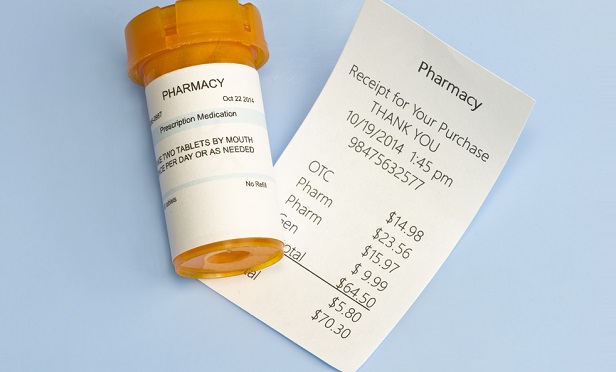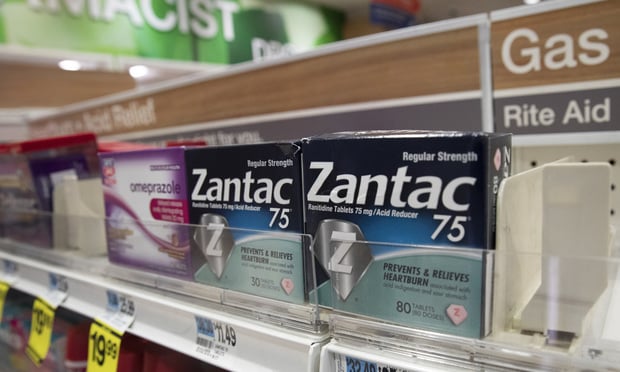 Consumeradvocates say the proposed changes will make drugs unaffordable formany people with serious medical conditions like cancer andmultiple sclerosis who rely on pricey medications. (Photo:Shutterstock)
Consumeradvocates say the proposed changes will make drugs unaffordable formany people with serious medical conditions like cancer andmultiple sclerosis who rely on pricey medications. (Photo:Shutterstock)
Patients who get financial help from drug companies to covertheir copayments for prescription drugs could owe a bigger chunk oftheir costs under a proposed federal rule.
|The annual rule, which sets a wide range of standards regarding benefits and payments formost health plans for next year, would allow employers and insurersto decide that drug companies' assistance doesn't count towardtheir members' deductible or out-of-pocket maximum spending limits.Only payments made by patients themselves would factor into thosecalculations.
|Consumer advocates say the proposed changes will make drugsunaffordable for many people with serious medical conditions likecancer and multiple sclerosis who rely on pricey medications.
|Related: Drug manufacturer coupons and out-of-pocket limits:What employers need to know
|"We need to make sure that patients have access to theirmedications, and we know from research that if people can't affordtheir medications they won't have access to them," said AnnaHoward, principal for policy development at the American CancerSociety Cancer Action Network. Going without those drug therapies"can allow the cancer to spread, and it negatively impacts theirprognosis."
|In a survey of more than 3,000 cancer patients last year,17 percent said they had used drug manufacturers'coupons or assistance programs, according to the Cancer ActionNetwork.
|Employers and insurers have long argued that drug companies' useof drug coupons and other assistance encourages consumers to takebrand-name drugs rather than cheaper generics. But research hasshown that only about half of brand-name drugs that offer copay assistancehave generic alternatives.
|In addition, businesses say they're focused on fairness.Allowing employees to shrink their out-of-pocket costs by usingsuch assistance isn't fair to other workers who need differenttypes of expensive care but don't get help covering theirout-of-pocket costs.
|"We have to treat people equally under the plan," said BrianMarcotte, the outgoing president and CEO of the Business Group onHealth, which represents large employers. He cited a scenario inwhich two employees might face very different cost-sharingobligations. One, he said, could need a drug with a $10,000 pricetag and receive copay assistance from the drug manufacturer. Butthe other employee, who needed a $10,000 surgical procedure, wouldreceive no outside help.
|According to the organization's most recent annual survey oflarge employers, 34 percent last year used "copayaccumulator" programs that did not count drugmakers' assistance aspart of workers' out-of-pocket limits and 4 percent planned to moveto that stance this year. An additional 15 percent said they wereconsidering introducing such a move during the next two years.
|The two sides have been tussling over this issue for severalyears. Patient advocates thought they had scored a victory when thefinal federal health plan rule for this year appeared to limitemployers' use of these programs. The rule suggested that unlessthere was a generic alternative to a brand-name drug, employerswere required to count drugmakers' copayment assistance towardworkers' maximum spending limit for the year.
|After pushback from employers and others, the government said itwould put those changes on hold and revisit the issue. Under the newproposed rule, health insurers and employers could opt not to applydrugmakers' copay assistance payments to patients' deductibles andout-of-pocket maximums for any drug, regardless of whether there isa generic alternative. The rule is underreview at the Office of Management and Budget.
|Abbey and Jeff Haudenshild, of Findlay, Ohio, have been ridingthis roller coaster in recent years. Their two sons, Parker, 4, andWeston, 1, have hemophilia. The boys' medication costs roughly$32,000 every month. When Parker was 1, the drug company copaymentassistance program picked up the family's portion of the cost,which totaled roughly $8,000 for the year, Abbey Haudenshildsaid.
|But the following year, the health insurer that covers themthrough Haudenshild's job as a physical therapist opted not toallow that. The Haudenshilds found out about it only when theirspecialty pharmacy contacted them to say they were on the hook forthe full amount of the copayments because the insurance companywasn't counting what the drug company sent toward their costs.
|"That was a shocker," said Haudenshild, who paid with a creditcard.
|Since then, the couple has set up a health savings account intowhich they put aside money every week to save up for their drugcopayments. One month's supply of the drug to treat both boys coststhem $7,500. In February, they reach their plan's $8,000out-of-pocket spending limit and the insurer picks up the costs forthe rest of the year.
|When the final rule for this year came out, Haudenshild tookheart. Since both boys are on a drug called Hemlibra, which has nogeneric, she thought she would be able to count the drug companyassistance.
|But then she learned that the government wasn't going to enforceits own rule, and she's disappointed by the government's proposedrule for next year.
|"The most challenging part is that it's not just one or twoyears that we're facing this cost, it's going to be every year forthem," said Haudenshild.
|However, some states, including the Haudenshilds' home of Ohio,are moving to help consumers. A bill introduced in the Ohio Houseof Representatives this year would require insurers to count cost-sharing payments made byindividuals or others on their behalf toward their total spendinglimits unless there is a generic alternative.
|If passed, Ohio would become the fifth state to pass a law thatcurbs or prohibits copay accumulator programs, according to BenChandhok, senior director of state legislative affairs at theArthritis Foundation.
|The others are Arizona, Illinois, Virginia and West Virginia, hesaid. More than a dozen states have filed bills this year thatwould limit the practice, Chandhok said. But state laws don'taffect the roughly two-thirds of people in plans regulated by thefederal government.
|In an unusual stance, the proposed federal rule would permitstate laws banning or limiting copay accumulators to supersede thefederal rules.
|But individual state laws that apply to a limited number ofstate-regulated health plans don't provide the comprehensivesolution that people need across the country, said Carl Schmid,executive director of the HIV + Hepatitis Policy Institute.
|"I just don't understand why the Trump administration, when hesays he wants to lower drug costs, would do something that couldcost patients billions of dollars in drug costs," Schmid said.
|Kaiser HealthNews (KHN) is a national health policy news service. It is aneditorially independent program of the Henry J. Kaiser Family Foundation whichis not affiliated with Kaiser Permanente.
|Read more:
Complete your profile to continue reading and get FREE access to BenefitsPRO, part of your ALM digital membership.
Your access to unlimited BenefitsPRO content isn’t changing.
Once you are an ALM digital member, you’ll receive:
- Critical BenefitsPRO information including cutting edge post-reform success strategies, access to educational webcasts and videos, resources from industry leaders, and informative Newsletters.
- Exclusive discounts on ALM, BenefitsPRO magazine and BenefitsPRO.com events
- Access to other award-winning ALM websites including ThinkAdvisor.com and Law.com
Already have an account? Sign In
© 2024 ALM Global, LLC, All Rights Reserved. Request academic re-use from www.copyright.com. All other uses, submit a request to [email protected]. For more information visit Asset & Logo Licensing.








